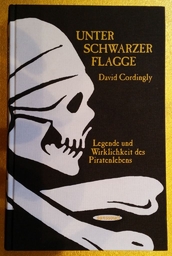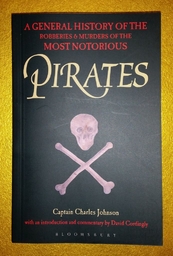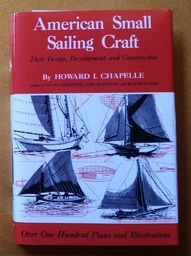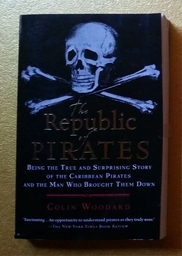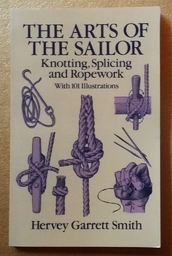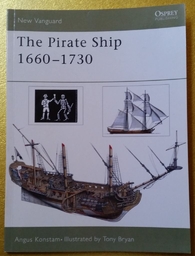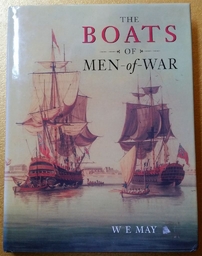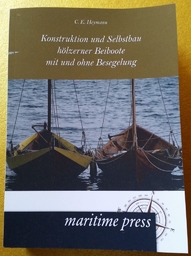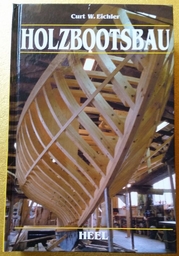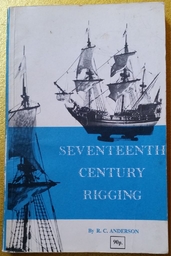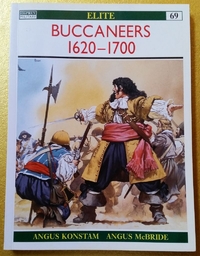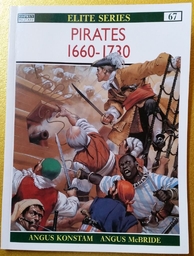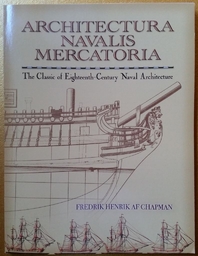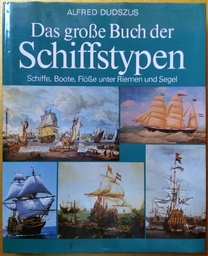-
Posts
106 -
Joined
-
Last visited
Content Type
Profiles
Forums
Events
Gallery
Everything posted by 'Beer Belly' Bellamy
-
As I was building some hand grenade dummies the question arose, how I am supposed to light them up period correct. As there are no pirate lighter shops around the corner in my part of the globe, I wonder if there are some lighters for the early 1700s to buy somewhere else? Or is there an easier way to light up things?
-
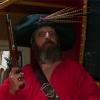
'appy Birthday to ye Beer Belly Bellamy
'Beer Belly' Bellamy replied to Jas. Hook's topic in Scuttlebutt
Thank you very, very much!!! I was not really around here and just discovered this in the moment -
Thank you very, very much!!! From first sight this seems to be just that kind of book I was looking for and luckily german amazon offers it. I placed my order instantly.
- 4 replies
-
- new providence
- nassau
-
(and 5 more)
Tagged with:
-
I read that post at your blog - thank you very much - good work! Maybe it's to pedantic, but I really would love to know how the buildings at Nassau were constructed and how they looked like. Are there any books available about the constructing of buildings of that period and perhaps of that area of the globe? It is not really easy to search the web for this topic as a not native english speaking guy and amazon is a real pain to search without the proper tags! (http://pyracy.com/index.php/topic/19482-how-would-a-pirate-vilagetown-look-like/)
- 4 replies
-
- new providence
- nassau
-
(and 5 more)
Tagged with:
-
Thanks to a very helpful hint I learn to get such a pardon document right here: http://www.lettersofmarque.co.uk/index.php?main_page=product_info&cPath=1&products_id=2
-
-

The Sloop of War 1650 - 1763, Ian McLaughlan
'Beer Belly' Bellamy posted a gallery image in Pub Members Gallery
From the album: Books
-
Is there a source of a copy of such a King's Pardon? Governors had the power to issue such a document, but how did it looked like? With the knowledge I could make myself such a King's Pardon document - you never know, it could be helpful one day
-
From the album: Books
-
From the album: Books
-
In German the term "Freibeuter" means literally 'free to capture' = somebody is allowed (by the authorities) to capture things. So the best content-related translation into english would be Privateer. A "Freibeuter" is not a pirate! As the Dutch language is a German dialect the Dutch term "vrijbuiter" cames from "Freibeuter". So the english term "freebooter" is not a far to off translation, althoug I would translate it into "freelooter" = somebody who is allowed (by the authorities) to loot things!
-

Flags in use during GAoP
'Beer Belly' Bellamy replied to 'Beer Belly' Bellamy's topic in Captain Twill
Colonial Brazil (1500–1815) The Portuguese territories in the Americas, corresponding roughly to what is now Brazil, never had their own official flag, since Portuguese tradition encouraged hoisting the flag of the Kingdom of Portugal in all territories of the Portuguese Crown. The first Brazilian vexillological symbols were private maritime flags used by Portuguese merchant ships that sailed to Brazil. A flag with green and white stripes was used until 1692. The green and white colors represented the House of Braganza and the national colors of Portugal. In 1692, that flag was no longer used by ships that sailed to Brazil and became the flag of the merchant vessels in coastal Portugal. In 1692, a new flag was introduced for merchant vessels sailing to Brazil. The new flag had a white field with a golden armillary sphere. The armillary sphere had served as the personal emblem of King Manuel I of Portugal (reigned 1494-1521). During his reign Portuguese ships used it widely, and eventually it became a national emblem of Portugal and, more specifically, of the Portuguese empire. A similar flag was introduced for the Portuguese ships that sailed to India, but with a red armillary sphere. Despite representing the entire Portuguese empire, the armillary sphere began to be used more extensively in Brazil — the largest and most developed colony at the time — not only in maritime flags, but also on coins and other media. It eventually became the unofficial ensign of Brazil. -

Flags in use during GAoP
'Beer Belly' Bellamy replied to 'Beer Belly' Bellamy's topic in Captain Twill
The Dutch Republic, also known as the Republic of the Seven United Netherlands (Republiek der Zeven Verenigde Nederlanden), Republic of the United Netherlands or Republic of the Seven United Provinces (Republiek der Zeven Verenigde Provinciën), was a republic in Europe existing from 1581, when part of the Netherlands separated from Spanish rule, until 1795. Alternative names include the United Provinces (Verenigde Provinciën), Federated Dutch Provinces (Foederatae Belgii Provinciae), and Dutch Federation (Belgica Foederata). Also used as Civil Ensign. -

Flags in use during GAoP
'Beer Belly' Bellamy replied to 'Beer Belly' Bellamy's topic in Captain Twill
1640 to 1667. 1667 to 1706. 1706 to 1750. -

Flags in use during GAoP
'Beer Belly' Bellamy replied to 'Beer Belly' Bellamy's topic in Captain Twill
In 1650, Sweden established trading stations along the West African coast, with bases in an area called the Swedish Gold Coast which was later a part of the West African Gold Coast, and which is today part of Ghana. Sweden and Denmark were competing for positions as regional powers during this period, and the Danes followed the Swedes to Africa, setting up stations a couple of years later. In 1663, the Swedish Gold Coast was taken over by the Danish colonial power and became part of the Danish Gold Coast. There is no historical documentation that shows that slaves were ever traded in the trading stations during their 13-year Swedish possession, rather it is assumed to be the case. Swedish trading stations reappeared in the 18th century, when Sweden established a colonial presence in the Caribbean. https://en.wikipedia.org/wiki/Swedish_overseas_colonies https://en.wikipedia.org/wiki/Swedish_East_India_Company -

Flags in use during GAoP
'Beer Belly' Bellamy replied to 'Beer Belly' Bellamy's topic in Captain Twill
The red Burgundy cross on white became the main Spanish civil, state and war ensign from 1517 until 1665. In 1665, it remains as civil ensign, while the state and war ensigns became white with the royal arms in several designs. Probably because of the former traditional usage as war ensign of the red saltire on white, many merchant ships flew different versions of the Burgundy cross as civil ensigns. Some Basque ships used a red saltire on blue, and some expeditions to the Netherlands used the red Burgundy saltire over blue and white stripes. But probably the most regularly used civil variant was blue with a white Burgundy saltire. This version was so popular among merchant captains, that it had to be prohibited by law in 1762. Source: Calvo and Grávalos 1983. (http://www.crwflags.com/fotw/flags/es~c1762.html#blu) -

Flags in use during GAoP
'Beer Belly' Bellamy replied to 'Beer Belly' Bellamy's topic in Captain Twill
The infamous English/British East India Company Prior to 1707. After 1707. The English East India Company flag changed over time. From the period of 1600 to the 1707 Acts of Union between England and Scotland the flag consisted of a St George's cross in the canton and a number of alternating Red and White stripes. After 1707 the canton contained the original Union Flag consisting of a combined St George's cross and a St Andrew's cross. There has been much debate and discussion regarding the number of stripes on the flag and the order of the stripes. Historical documents and paintings show many variations from 9 to 13 stripes, with some images showing the top stripe being red and others showing the top stripe being white. At the time of the American Revolution the East India Company flag was nearly identical to the Grand Union Flag. Historian Charles Fawcett argued that the East India Company Flag inspired the Stars and Stripes. -

Flags in use during GAoP
'Beer Belly' Bellamy replied to 'Beer Belly' Bellamy's topic in Captain Twill
The Dutch West India Company (Dutch: Geoctroyeerde Westindische Compagnie; English: Chartered West India Company) was a chartered company (known as the "WIC") of Dutch merchants. On June 3, 1621, it was granted a charter for a trade monopoly in the West Indies (meaning the Caribbean) by the Republic of the Seven United Netherlands and given jurisdiction over the Atlantic slave trade, Brazil, the Caribbean, and North America. The area where the company could operate consisted of West Africa (between the Tropic of Cancer and the Cape of Good Hope) and the Americas, which included the Pacific Ocean and the eastern part of New Guinea. The intended purpose of the charter was to eliminate competition, particularly Spanish or Portuguese, between the various trading posts established by the merchants. The company became instrumental in the Dutch colonization of the Americas. The Dutch West India Company went bankrupt in 1636 In 1647 the Company made a restart. When the WIC could not repay its debts in 1674, the company was dissolved. But because of high demand for trade with the West (mainly slave trade), and the fact that still many colonies existed, it was decided to establish the Second Chartered West India Company (also called New West India Company) in 1675. This new company had the same trade area as the first. From 1694 until 1700, the Dutch West India Company waged a long conflict against the Eguafo Kingdom along the Gold Coast, present-day Ghana. The Komenda Wars drew in significant numbers of neighboring African kingdoms and led to replacement of the gold trade with slaves. After the Fourth Anglo-Dutch War, it became apparent that the Dutch West India Company was no longer capable of defending its own colonies, as Sint Eustatius, Berbice, Essequibo, Demerara, and some forts on the Dutch Gold Coast were rapidly taken by them. In 1791, the company's stock was bought by the Dutch government, and on 1 January 1792, all territories previously held by the Dutch West India Company reverted to the rule of the States General of the Dutch Republic. The Dutch East India Company (Dutch: Vereenigde Oostindische Compagnie, VOC, "United East India Company") was a chartered company established in 1602, when the States General of the Netherlands granted it a 21-year monopoly to carry out trade activities in Asia. It is often considered to have been the first multinational corporation in the world and it was the first company to issue stock. It was a powerful company, possessing quasi-governmental powers, including the ability to wage war, imprison and execute convicts, negotiate treaties, strike its own coins, and establish colonies. Statistically, the VOC eclipsed all of its rivals in the Asia trade. Between 1602 and 1796 the VOC sent almost a million Europeans to work in the Asia trade on 4785 ships, and netted for their efforts more than 2.5 million tons of Asian trade goods. By contrast, the rest of Europe combined sent only 882412 people from 1500 to 1795, and the fleet of the English (later British) East India Company, the VOC's nearest competitor, was a distant second to its total traffic with 2690 ships and a mere one-fifth the tonnage of goods carried by the VOC. The VOC enjoyed huge profits from its spice monopoly through most of the 17th century. -

Flags in use during GAoP
'Beer Belly' Bellamy replied to 'Beer Belly' Bellamy's topic in Captain Twill
As the Danes also had gained some islands in the West Indies (what is since 1917 known as United States Virgin Islands - more on that can be found here: https://en.wikipedia.org/wiki/Danish_West_Indies), we should know their flags also. The Splitflag is a Danish flag ending in a swallow-tail, it is Dannebrog red, and is used on land. The first regulation regarding the Splitflag dates from March 27, 1630, in which King Christian IV orders that Norwegian Defensionskibe (armed merchants ships) may only use the Splitflag if they are in Danish war service. In 1685 an order, distributed to a number of cities in Slesvig, states that all ships must carry the Danish flag, and in 1690 all merchant ships are forbidden to use the Splitflag, with the exception of ships sailing in the East Indies, West Indies and along the coast of Africa. In 1741 it is confirmed that the regulation of 1690 is still very much in effect; that merchant ships may not use the Splitflag. At the same time the Danish East India Company is allowed to fly the Splitflag when past the equator. -

Flags in use during GAoP
'Beer Belly' Bellamy replied to 'Beer Belly' Bellamy's topic in Captain Twill
The apperance of the French Naval Ensign seems a little funny nowadays, but that's how it looked alike back than (pre the French Revolution). At least it is an easy to draw flag Naval Ensign of France. During the period of the Ancien Régime, starting in the early 17th century, the royal standard of France became a plain white flag as a symbol of purity, sometimes covered in fleur-de-lis when in the presence of the king or bearing the ensigns of the Order of the Holy Spirit. The white color was also used as a symbol of military command, by the commanding officer of a French army. It would be featured on a white scarf attached to the regimental flag as to recognise French units from foreign ones and avoid friendly fire incidents. The French troops fighting in the American War of Independence fought under the white flag. The French Navy used a plain white ensign for ships of the line. Smaller ships might have used other standards, such as a fleur-de-lis on white field. Commerce and private ships were authorised to use their own designs to represent France, but were forbidden to fly the white ensign. Merchant Ensign of France. According to Encyclopaedia Universalis, merchant ships had a blue ensign with a white cross, charged with the crowned shield of France, but they used to hoist the plain white ensign (allowed only for Royal vessels, by Order of 9 October 1661 and Regulation of 12 July 1670) in order to command respect. This usurpation was generalized around 1760 and officialized by the Order of 25 March 1765 (a distinctive emblem of the ship owner was allowed). This flag was also used as Merchant Ensign of New France https://en.wikipedia.org/wiki/French_colonization_of_the_Americas -

Flags in use during GAoP
'Beer Belly' Bellamy replied to 'Beer Belly' Bellamy's topic in Captain Twill
Thank you Mr. Mission! Also thank you for the links! I read them both some time ago and then I couldn't find them again. -

Flags in use during GAoP
'Beer Belly' Bellamy replied to 'Beer Belly' Bellamy's topic in Captain Twill
After the english/british/scottish/irish let us talk about the spaniards The Viceroalty of Spain existed from 1535 to 1821. But I wasn't able yet to learn from when on they used this flag exactly and how long, but the GAoP was right in the middle between 1535 to 1821, so this flag should have been spottet during "our time" very well. From 1701 to 1760 there was a new flag introduced to spain, which maybe was flown on warships from the homeland, but I couldn't figure that out somehow yet. -

Flags in use during GAoP
'Beer Belly' Bellamy replied to 'Beer Belly' Bellamy's topic in Captain Twill
For nearly 40 years I somehow had missinterpreted the meaning of the following flags when it comes to their use during GAoP. Back then I only knew the "modern" use of them. The White Ensign used by the navy, the Red Ensign used by the merchant marine and of the Blue Ensign I had no knowlege. But the use of those ensigns was very different back in "our time"! (Another text "borrow" from Wikipedia) Prior to 1864, red, white, and blue were the colours of the three squadrons of the Royal Navy, which were created as a result of the reorganisation of the navy in 1652 by Admiral Robert Blake. Each squadron flew one of the three ensigns. In addition to the Admiral of the Fleet (who was Admiral of the Red), each squadron had its own admirals, vice admirals and rear admirals, e.g. Lord Nelson was Vice Admiral of the White at the time of his death. The red squadron tended to patrol the Caribbean and north Atlantic, the white the coasts of Britain, France and the Mediterranean, while the blue patrolled the south Atlantic, Pacific and Indian oceans. The flags of the various former British colonies often have grounds of the same colour as their protective squadron. Hence Bermuda has a red ground and Australia and New Zealand blue. Canada's flag was a red ensign from founding until the adoption of the more familiar maple leaf flag in 1965. The Red Ensign 1707 to 1800. The Red Ensign 1620 to 1707. The Blue Ensign 1707 to 1800. The Blue Ensign 1620 to 1707. The White Ensign 1707 to 1800. The White Ensign 1630 to 1702. Pre 1707 there was also an Scottish Red Ensign Scottish Red Ensign (Once again "borrowed" from Wikipedia) It is probable that the cross-saltire was adopted by the Scots as a national ensign at a very early period, but there seems no direct evidence of this before the fourteenth century. The earliest Scottish records were lost at sea in the ship that was sent to return them to that country, whence they had been carried off, with the Stone of Destiny, by Edward I. Prior to 1707 the Scottish Red Ensign was flown by ships of the Royal Scots Navy, with a Saltire in the canton. In additition to the Scottish Red Ensigns Scottish warships also flew the Flag of Scotland. There were some other ensigns in use durig some short periods, maybe I cover them later. -

Flags in use during GAoP
'Beer Belly' Bellamy replied to 'Beer Belly' Bellamy's topic in Captain Twill
Also absolutely new to me was the Green Ensign! The Green Ensign (Irish: An Meirge Uaine) is a flag flown by some Irish merchant vessels from the 17th century to the early 20th century. -

Flags in use during GAoP
'Beer Belly' Bellamy replied to 'Beer Belly' Bellamy's topic in Captain Twill
New to me is the Scottish variant of the Union Flag. I couldn't write the descripion better, so I "borrowed" it from Wikipedia Scottish Union Flag In objecting to the design of Union Flag adopted in 1606, whereby the cross of Saint George surmounted that of Saint Andrew, a group of Scots took up the matter with John Erskine, 18th Earl of Mar, and were encouraged by him to send a letter of complaint to James VI, via the Privy Council of Scotland, which stated that the flag's design "will breid some heit and miscontentment betwix your Majesties subjectis, and it is to be feirit that some inconvenientis sail fall oute betwix thame, for our seyfaring men cannot be inducit to resave that flage as it is set down". Although documents accompanying this complaint which contained drafts for alternative designs have been lost, evidence exists, at least on paper, of an unofficial Scottish variant, whereby the Scottish cross was uppermost. There is reason to think that cloth flags of this design were employed during the 17th century for unofficial use on Scottish vessels at sea. This flag's design is also described in the 1704 edition of The Present State of the Universe by John Beaumont, which contains as an appendix The Ensigns, Colours or Flags of the Ships at Sea: Belonging to The several Princes and States in the World. On 17 April 1707, just two weeks prior to the Acts of Union coming into effect, and with Sir Henry St George, Garter King of Arms, having presented several designs of flag to Queen Anne and her Privy Council for consideration, the flag for the soon to be unified Kingdom of Great Britain was chosen. At the suggestion of the Scots representatives, the designs for consideration included that version of Union Jack showing the Cross of Saint Andrew uppermost; identified as being the "Scotts union flagg as said to be used by the Scotts". However, the Queen and her Council approved Sir Henry's original effort, numbered "one". A manuscript compiled in 1785 by William Fox and in possession of the Flag Research Center includes a full plate showing "the scoth [sic] union" flag. This could imply that there was still some use of a Scottish variant before the addition of the cross of St Patrick to the Union Flag in 1801.


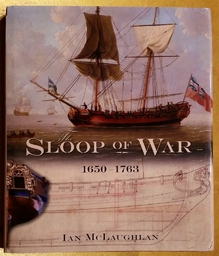
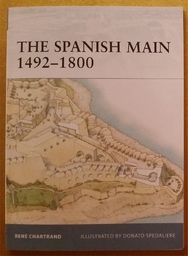
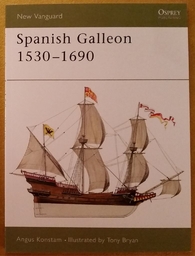
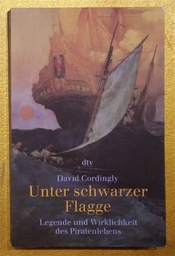
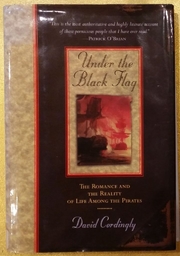
!["Piraten - Furcht und Schrecken auf den Weltmeeren" David Cordingly [editor] (German edition of "Pirates. Terror on the High Seas. From the Caribbean to the South China Sea.") ISBN 3-802-2708-9](https://pyracy.com/pub_gallery/gallery/album_655/small.gallery_23000_655_5431657.jpg.89486a0cb94ccdf53a08dcc648db42e5.jpg)
